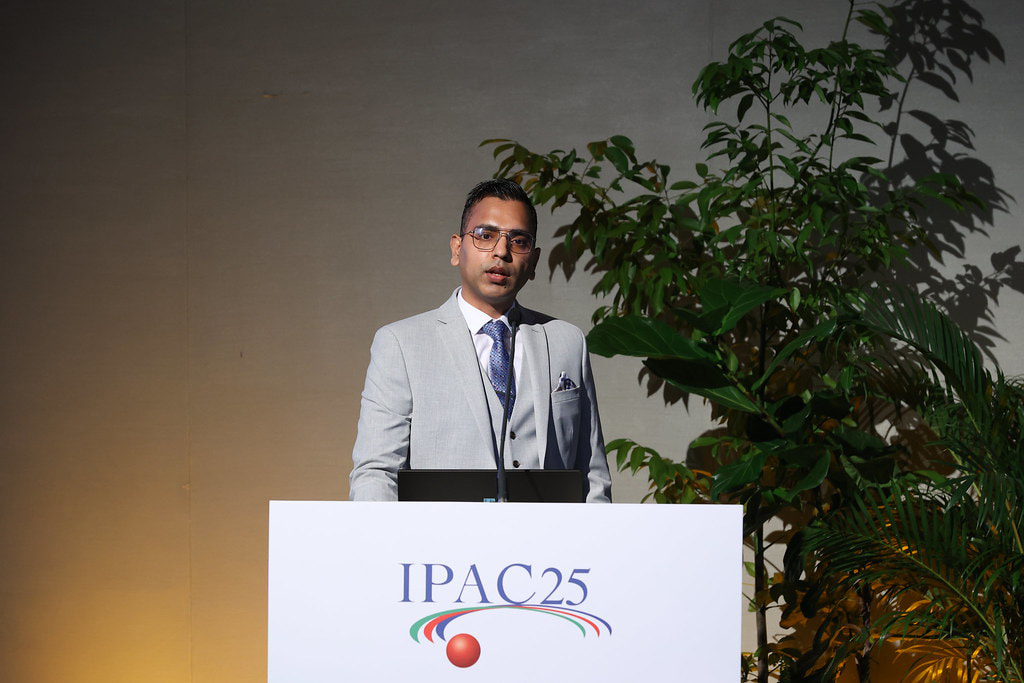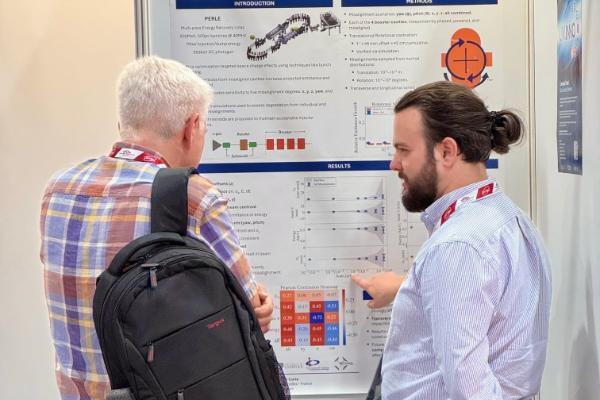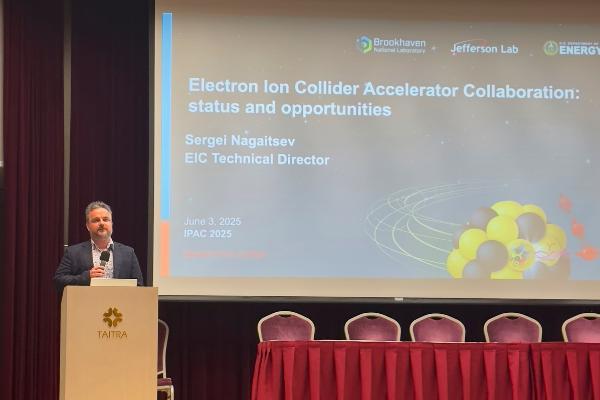
The 16th International Particle Accelerator Conference (IPAC’25) was held from 1 - 6 June 2025 at the International Convention Centre and the Taipei World Trade Centre in the bustling metropolis of Taipei, Taiwan. The event was hosted by the National Synchrotron Radiation Research Centre and attracted 1,000 delegates and about 70 industrial exhibitors from all over the world. The rich scientific programme covered worldwide advancements in state-of-the-art accelerator research and development, gaining insights into new projects, and staying abreast of the latest developments in accelerator facilities globally. Besides, participants had the valuable opportunity to connect with peers and establish new business contacts.
The QUASAR Group contributed to the scientific programme, either in person or by proxy, showing their latest research and developments across plasma acceleration, novel acceleration schemes, data science, medical applications and beam dynamics studies.

Connor Monaghan at the poster session.
PhD student Connor Monaghan presented a poster on ‘Characterisation of beam dynamics sensitivity to misalignments in the PERLE injector’. In his poster he characterised the beam dynamics when various types of misalignments are applied to the booster linac. These findings provide an important guide for the subsequent design of the booster linac and alignment procedure.
QUASAR Group leader Professor Carsten P Welsch contributed two posters which gave an insight into the research and developments within the EuPRAXIA Doctoral Network and how the research in the Liverpool Centre for Doctoral Training for Innovation in Data Intensive Science (LIV.INNO) is advancing accelerator science. These triggered many interesting discussions during the conference.
Professor Welsch also chaired the EIC Satellite Meeting on 4 June at the Taipei International Convention Center. The event, organized by Dr Tatiana Pieloni and Dr Sergei Nagaitsev, brought together around 100 experts to discuss technical developments and foster international collaboration in support of the Electron-Ion Collider (EIC), a flagship facility for unlocking the inner structure of matter. It built up on the EIC Accelerator Collaboration kick-off meeting which Professor Welsch hosted during IPAC’24. This year’s meeting provided a dynamic forum for updates on accelerator R&D and future strategic directions. Professor Welsch said: “The EIC represents one of the most ambitious undertakings in modern accelerator science. Bringing together expertise from around the world is essential to overcoming the challenges ahead and ensuring the success of this groundbreaking project.”

Prof Welsch during the EIC Satellite Meeting.
Another highlight was Dr Narender Kumar’s talk on ‘Supersonic gas curtain-based in-vivo transverse beam profile monitoring for medical accelerators’ where he discussed the beam diagnostics challenges in current and next-generation medical accelerators facilities and presented the supersonic gas curtain-based ionization profile monitor as a promising non-invasive, real-time solution for beam monitoring. This approach aims to improve the patient safety and treatment efficacy. Dr Kumar shared results from successful proof-of –concept measurements carried out at DCF and Birmingham University and outlined a roadmap for further enhancing the performance of the existing monitoring system.
Dr Kumar also contributed to the conference as a member of the JACOW editorial team, assisting the authors of IPAC’25 in producing high-quality conference proceedings. In total the team edited more than 850 proceedings. Later this year, Dr Kumar will lead the editorial work for IBIC 2025, which will be hosted in Liverpool in September 2025.
Thank you to all QUASARs who contributed to the preparation, review and presentation of the Group’s research!